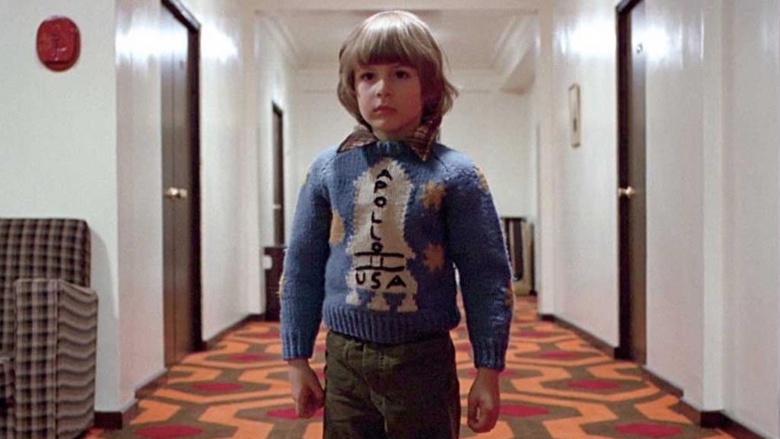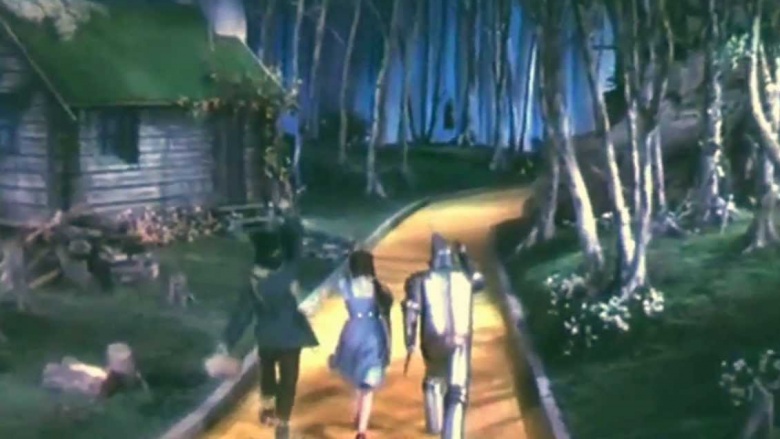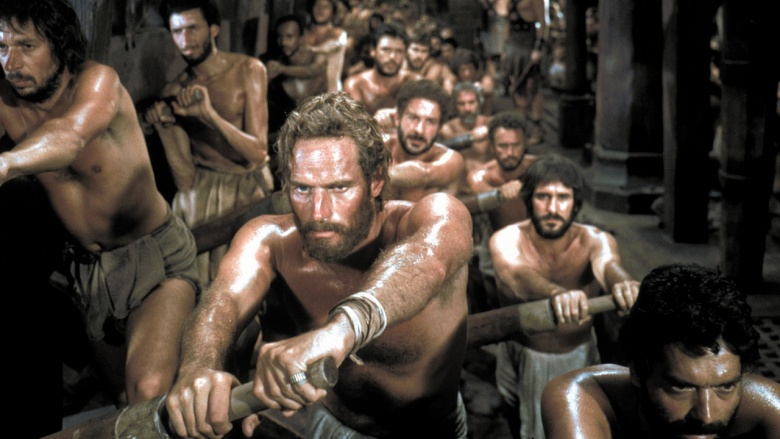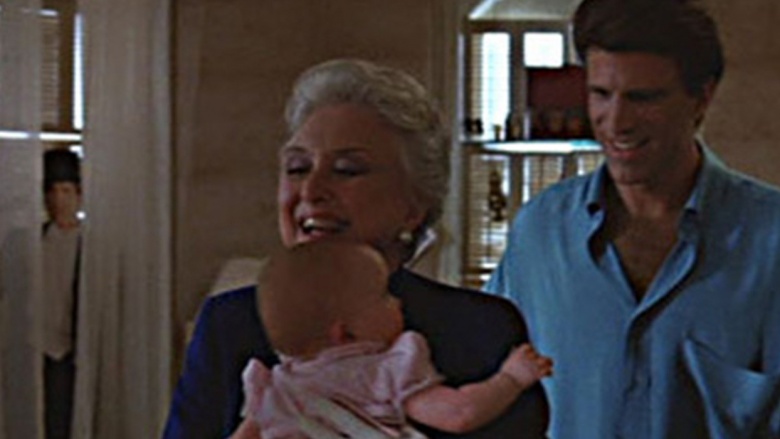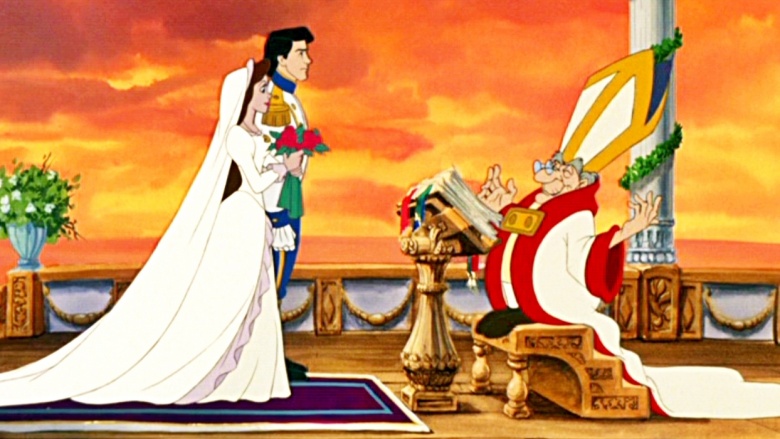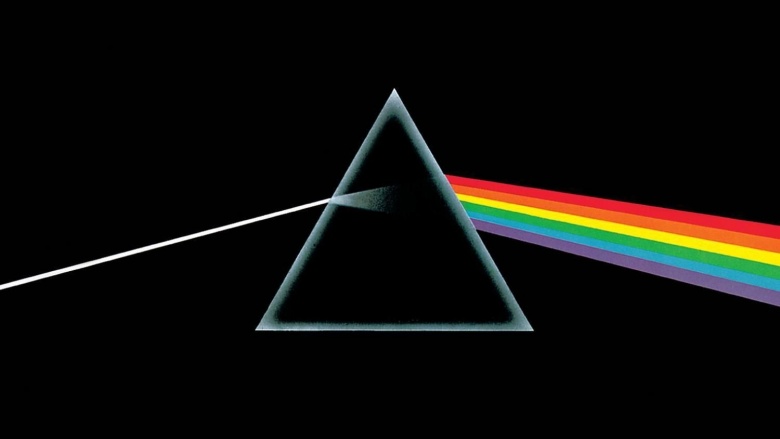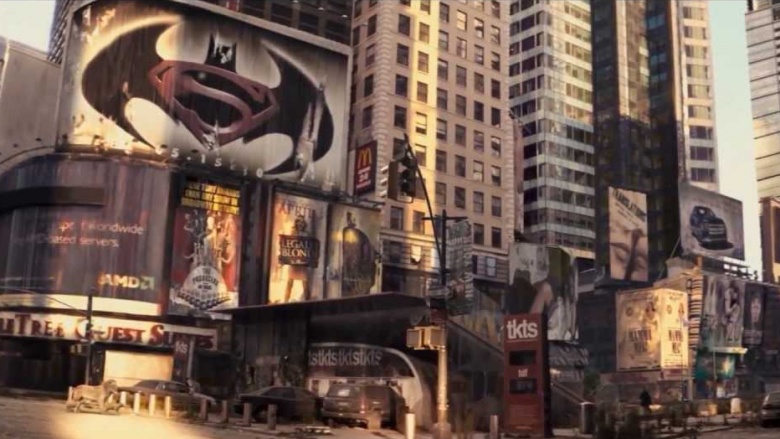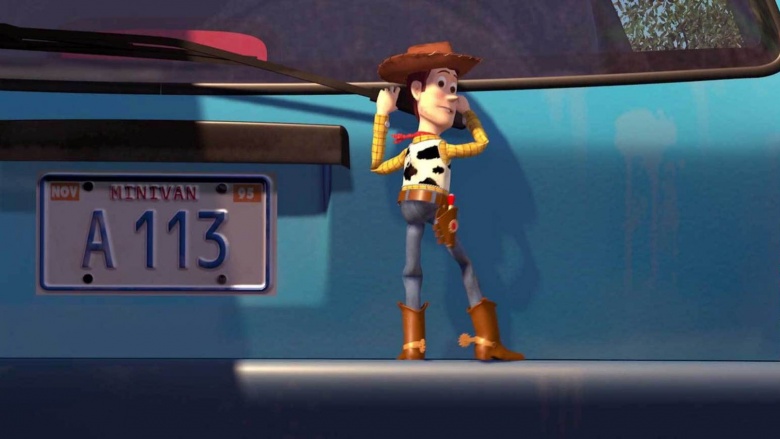False Movie Easter Eggs You Always Thought Were True
Easter Eggs have been around in film long before they even had a name—from subtle ones, like Hitchcock's cameos, to the not-so-subtle, like George Lazenby's James Bond breaking the fourth wall to remark "this never happened to that other fellow" as a nod to Sean Connery's version of 007 getting all the girls. Rocky Horror Picture Show even includes three literal Easter eggs visible in the final cut of the film—leftovers from an onset hunt early in the shoot.
Many Easter eggs have developed a life of their own thanks to elaborate theories about their meanings. As you'll see, many of these theories have been way off base.
The Shining - 'Moon Landing' theory
Stanley Kubrick's The Shining is one of a handful of horror films you could write a doctoral thesis on without people looking at you funny. It's masterfully shot and packed with some of the most memorable scenes in film history. It's stark and daring...and also supposedly clues sharp-eyed viewers in to Kubrick's role in faking the moon landing.
Wait, what?
There's a pretty elaborate theory that says there are clues hidden throughout The Shining which point to an admission by Stanley Kubrick that he helped fake the moon landing. There's Danny's "Apollo 11" sweater. The room where all the bad stuff happens is changed from the book's 217 to 237 (a supposed reference to the moon's distance from the Earth). The creepy twins are a reference to NASA's Gemini program. There are visible containers of Tang (long associated with the space program) in the storage pantry. The teddy bears strewn about the film represent the looming Russian threat. So on and so forth.
As bonkers as it sounds, this theory made the rounds for so long that Kubrick's own daughter had to publish an open letter debunking the whole thing. But of course, that could just be what they all want you to believe...
The Wizard of Oz - 'Hanging Munchkin' scene
Legends about this supposed hidden image were a product of the age of VHS, but nobody can quite put a finger on the year. Supposedly people were talking about this as far back as 1986, but Snopes estimates the rumors started in 1989, with the 50th anniversary re-release of the film. Viewers saw an odd silhouette in one of the forest scenes and passed along the story that this was one of the diminutive actors in the process of ending it all over unrequited love.
The official story from the studio is that it's a shadow—either of a stagehand, or one of the large birds they released on set. And even though it may be blurry and far away from the point of view of the camera, you'll note it's not too far ahead of and in the direct line of sight of all the actors. Could you really imagine that they could ignore such a thing?
The 'wristwatch' in Ben-Hur
Ben-Hur is a classic—and as such, it has acquired a number of legends over the years. Alas, many of its "moments to watch out for" are buried in various shades of untruth. No, a stuntman didn't die in the chariot race; as recent remasters of the film have made perfectly clear, it's clearly a dummy being run over. The "tire tracks" on the chariot track were from the camera dolly. And nobody was wearing a wristwatch.
Charlton Heston himself noted in his commentary track that what folks keep mistaking for wristwatches were really just period-appropriate leather braces, caught in weird lighting. But then again, Heston is also the person who denied the blatant subtext between Ben-Hur and Massala, so maybe his version of events is suspect.
Three Men and a Baby and a spooky 'ghost kid'
Three Men And A Baby was a massively successful 1980s comedy movie starring Tom Selleck, Steve Guttenberg and Ted Danson—better known today as "Who?," "Who?," and "Oh, I think I saw that guy on CSI." Sorry for the spoilers in advance, but it's a wacky comedy (directed by Star Trek legend Leonard Nimoy) about three men and a baby. They wind up accidentally giving the baby to drug dealers in exchange for heroin. Ha ha ha, right?
Anyway, it's been a long-running legend that in one scene, you can supposedly see a "ghost child" who died on the set peering through the window. Turns out it's actually a cardboard cutout of Ted Danson that was a prop for a scene that didn't make the final cut of the film—not that the idea of Danson peering into a bedroom window is any less unnerving.
The 'erection' in The Little Mermaid
This particular blink-and-you'll-miss-it moment became such a fuss that Disney actually removed a scene due to a lawsuit. Apparently folks on eBay now pay up to a few thousand dollars for the, ahem, intact version of the movie. But we're not here to judge.
With the frames shown side by side, it's pretty clear that what some people thought was evidence of excitement is actually an old man's saggy, chubby...knees. Again, we're not here to judge.
'Dark Side of the Rainbow' - Pink Floyd and The Wizard of Oz
Rumors about this one started surprisingly recently: Wizard of Oz came out in 1939, Pink Floyd's Dark Side of the Moon was released in 1973, and the first rumors that the two went together started to appear in the '90s. And indeed, starting the record right after the third MGM lion's roar, you do see many things line up. Lyrics say things like "balanced on the biggest wave" as Dorothy feigns a tightrope-like walk along the fence of an animal pen. When Dorothy first runs away from home to rescue Toto, the line "no one told you when to run" can be heard, and then "home home again" when the fortune teller suggests she return home. The song "Brain Damage" lines up with the Scarecrow's song and dance number "If I Only Had A Brain."
It's all very interesting and a lot of fun, but no less an authority than Pink Floyd drummer Nick Mason has explained why the theory is crap. "Who on Earth spent that much time working with that track and that movie?" he wondered. "You could probably try it with other records and other films. I mean, maybe Ben-Hur and The Wall would work." The band has also pointed out that there was no way for them to watch the film in the studio in the early '70s even if they wanted to, which would certainly put a damper on their ability to build an entire album around it. It's just all a happy, trippy coincidence, man.
The Batman vs Superman poster in I Am Legend
The Will Smith dystopian vampire movie I Am Legend includes a lot of disturbing imagery, including a shot of a poster depicting/predicting the disastrous Batman vs Superman. Interestingly enough, however, this wasn't some sort of viral marketing planted nearly a decade in advance. Turns out the poster was a nod to a much earlier take on the concept that was thrown around in development circa 2001. It would have even included Christian Bale, before Batman Begins even happened.
Could you imagine if it had come together and flopped, keeping Christopher Nolan's Dark Knight trilogy from ever being made? That's the real dystopia.
A113
This number is all over the place. You can see it in episodes of The Simpsons, it's in nearly every Pixar movie, and you can find it in The Avengers, the Hunger Games franchise, and tucked away somewhere in pretty much every movie with a massive CGI budget. It's so pervasive people have created elaborate "Illuminati"-style conspiracy interpretations of its meaning.
Turns out it's just a nod to A1-13, the number for the animation classroom at California Institute of the Arts' Character Animation Program. It's likely class experiments there produced the prototypes for most of the animated films and shows we've enjoyed for decades—and each time we've seen it, it's been lovingly snuck in by a former pupil paying tribute to their humble beginnings.

